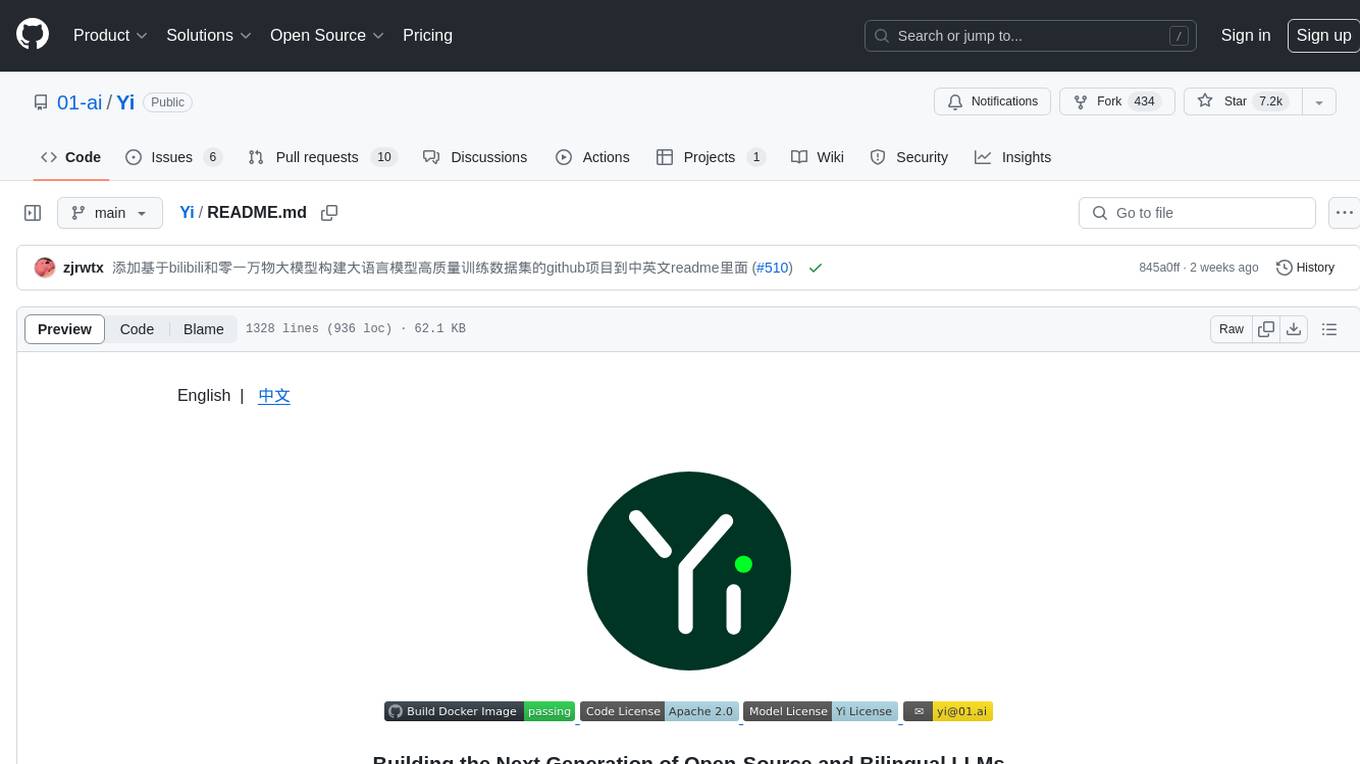
tt-metal
:metal: TT-NN operator library, and TT-Metalium low level kernel programming model.
Stars: 1216
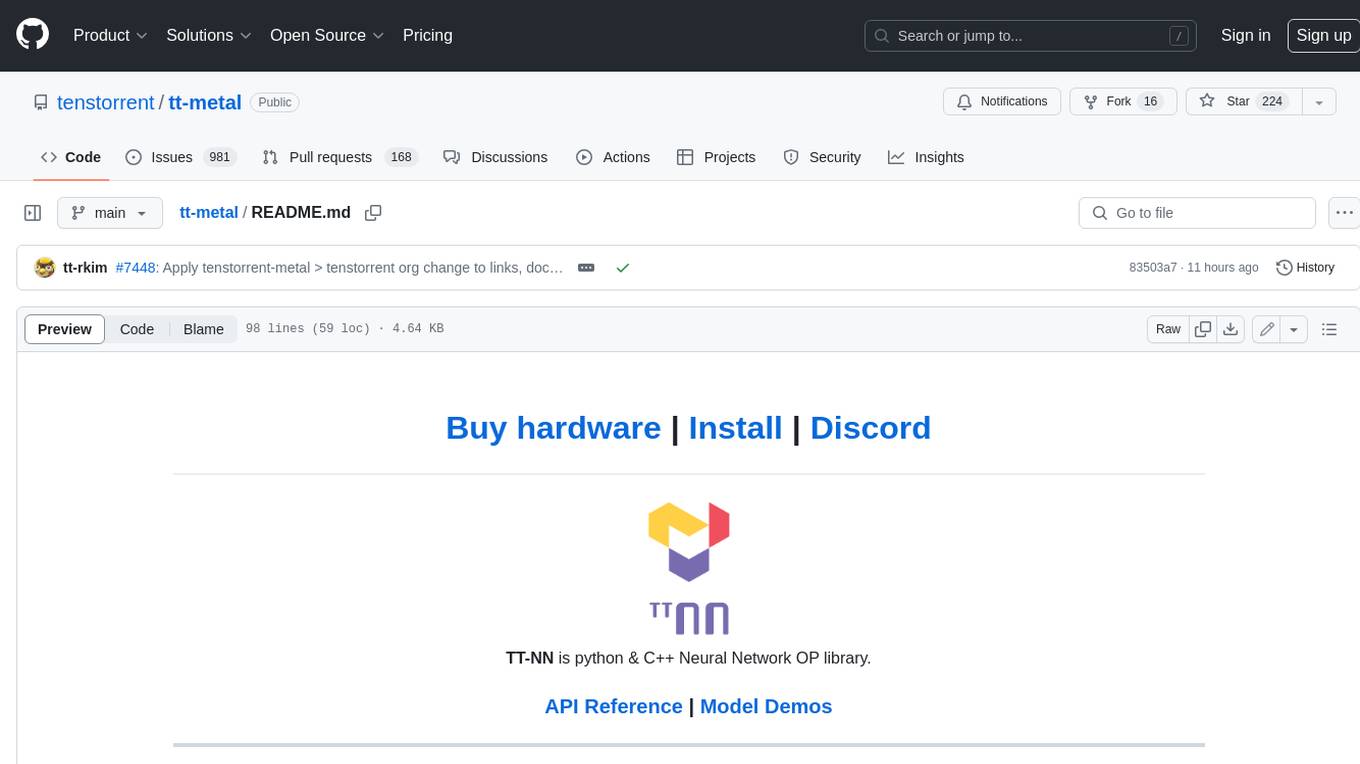
TT-NN is a python & C++ Neural Network OP library. It provides a low-level programming model, TT-Metalium, enabling kernel development for Tenstorrent hardware.
README:
Hardware | Install | Discord | Join Us | Bounty $

TT-NN is a Python & C++ Neural Network OP library.
The Models team is focused on developing the following models to a customer-ready state. Ongoing work includes optimizations for performance, accuracy, and compatibility. Follow each model link for more details.
[!IMPORTANT] For a full model list see the Model Matrix, or visit the Developer Hub.
[!NOTE] Performance Metrics:
- Time to First Token (TTFT) measures the time (in milliseconds) it takes to generate the first output token after input is received.
- T/S/U (Tokens per Second per User): Represents the throughput of first-token generation after prefill. It is calculated as 1 / inter-token latency.
- T/S (Tokens per Second): Represents total token throughput, calculated as T/S = T/S/U x batch size.
- TP (Tensor Parallel) and DP (Data Parallel): Indicate the parallelization factors across multiple devices.
- Reported LLM Performance: Based on an input sequence length of 128 tokens for all models.
- Performance Data Source: Metrics were collected using the tt-metal model demos (linked above). Results may vary when using other runtimes such as the vLLM inference server.
| Batch | Hardware | TTFT (MS) | T/S/U | Target T/S/U |
T/S | TT-Metalium Release | vLLM Tenstorrent Repo Release |
|---|---|---|---|---|---|---|---|
| 32 | Galaxy (Wormhole) | 53 | 72.5 | 80 | 2268.8 | v0.62.2 | c348d08 |
| Batch | Hardware | TTFT (MS) | T/S/U | Target T/S/U |
T/S | TT-Metalium Release | vLLM Tenstorrent Repo Release |
|---|---|---|---|---|---|---|---|
| 32 | QuietBox (Wormhole) | 109 | 22.1 | 30 | 707.2 | v0.59.0-rc52 | f028da1 |
Blackhole software optimization is under active development. Please join us in shaping the future of open source AI!
[Discord] [Developer Hub]
For more information regarding vLLM installation and environment creation visit the Tenstorrent vLLM repository.
For the latest model updates and features, please see MODEL_UPDATES.md
For information on initial model procedures, please see Model Bring-Up and Testing
- Advanced Performance Optimizations for Models (updated March 4th, 2025)
- Programming Mesh of Devices (updated Sept 9th, 2024)
- ViT Implementation in TT-NN on GS (updated Sept 22nd, 2024)
- LLMs Bring up in TT-NN (updated Oct 29th, 2024)
- YOLOv4 Implementation in TT-NN on WH (updated November 8th, 2024)
- CNN Bring up & Optimization in TT-NN (updated Jan 22nd, 2025)
- Matrix Multiply FLOPS on Wormhole and Blackhole (updated June 17th, 2025)
TT-Metalium is our low-level programming model, enabling kernel development for Tenstorrent hardware.
Get started with simple kernels.
- Matrix Engine (updated Sept 6th, 2024)
- Data Formats (updated Sept 7th, 2024)
- Reconfiguring Data Formats (updated Oct 17th, 2024)
- Handling special floating-point numbers (updated Oct 5th, 2024)
- Allocator (Updated Dec 19th, 2024)
- Tensor Layouts (updated Sept 6th, 2024)
- Saturating DRAM Bandwidth (updated Sept 6th, 2024)
- Flash Attention on Wormhole (updated Sept 6th, 2024)
- CNNs on TT Architectures (updated Sept 6th, 2024)
- Ethernet and Multichip Basics (Updated Sept 20th, 2024)
- Collective Communication Library (CCL) (Updated Sept 20th, 2024)
- Blackhole Bring-Up Programming Guide (Updated Dec 18th, 2024)
- Sub-Devices (Updated Jan 7th, 2025)
- Matmul OP on a Single_core
- Matmul OP on Multi_core (Basic)
- Matmul Multi_core Reuse (Optimized)
- Matmul Multi_core Multi-Cast (Optimized)
A comprehensive tool for visualizing and analyzing model execution, offering interactive graphs, memory plots, tensor details, buffer overviews, operation flow graphs, and multi-instance support with file or SSH-based report loading. Install via pip or build from source:
pip install ttnn-visualizerThe TT-Exalens repository describes TT-Lensium, a low-level debugging tool for Tenstorrent hardware. It allows developers to access and communicate with Wormhole and Blackhole devices.
The Model Explorer is an intuitive and hierarchical visualization tool using model graphs. It organizes model operations into nested layers and provides features for model exploration and debugging.
The Tracy Profiler is a real-time nanosecond resolution, remote telemetry, hybrid frame, and sampling tool. Tracy supports profiling CPU, GPU, memory allocation, locks, context switches, and more.
DPRINT can print variables, addresses, and circular buffer data from kernels to the host terminal or log file. This feature is useful for debugging issues with kernels.
Watcher monitors firmware and kernels for common programming errors, and overall device status. If an error or hang occurs, Watcher displays log data of that occurrence.
Inspector provides insights into host runtime. It logs necessary data for investigation and allows queries to host runtime data.
| Release | Release Date |
|---|---|
| 0.64.0 | ETA Oct 15, 2025 |
| 0.63.0 | Sep 22, 2025 |
| 0.62.2 | Aug 20, 2025 |
| 0.61.0 | Skipped |
| 0.60.1 | Jul 22, 2025 |
| 0.59.0 | Jun 18, 2025 |
| 0.58.0 | May 13, 2025 |
| 0.57.0 | Apr 15, 2025 |
| 0.56.0 | Mar 7, 2025 |
Visit the releases folder for details on releases, release notes, and estimated release dates.
This repo is a part of Tenstorrent’s bounty program. If you are interested in helping to improve tt-metal, please make sure to read the Tenstorrent Bounty Program Terms and Conditions before heading to the issues tab. Look for the issues that are tagged with both “bounty” and difficulty level!
TT-Metalium and TTNN are licensed under the Apache 2.0 License, as detailed in LICENSE and LICENSE_understanding.txt.
Some distributable forms of this project—such as manylinux-compliant wheels—may need to bundle additional libraries beyond the standard Linux system libraries. For example:
- libnuma
- libhwloc
- openmpi (when built with multihost support)
- libevent (when built with multihost support)
These libraries are bound by their own license terms.
For Tasks:
Click tags to check more tools for each tasksFor Jobs:
Alternative AI tools for tt-metal
Similar Open Source Tools

tt-metal
TT-NN is a python & C++ Neural Network OP library. It provides a low-level programming model, TT-Metalium, enabling kernel development for Tenstorrent hardware.
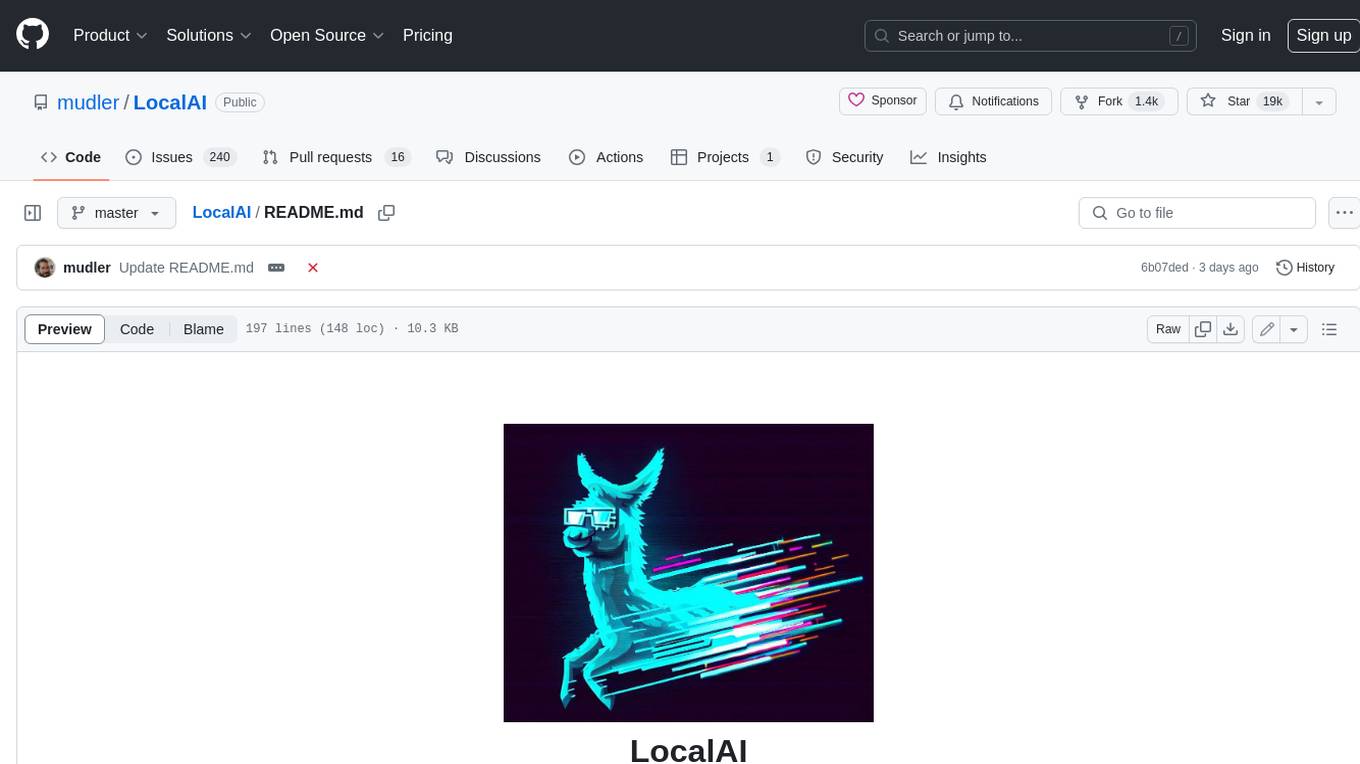
LocalAI
LocalAI is a free and open-source OpenAI alternative that acts as a drop-in replacement REST API compatible with OpenAI (Elevenlabs, Anthropic, etc.) API specifications for local AI inferencing. It allows users to run LLMs, generate images, audio, and more locally or on-premises with consumer-grade hardware, supporting multiple model families and not requiring a GPU. LocalAI offers features such as text generation with GPTs, text-to-audio, audio-to-text transcription, image generation with stable diffusion, OpenAI functions, embeddings generation for vector databases, constrained grammars, downloading models directly from Huggingface, and a Vision API. It provides a detailed step-by-step introduction in its Getting Started guide and supports community integrations such as custom containers, WebUIs, model galleries, and various bots for Discord, Slack, and Telegram. LocalAI also offers resources like an LLM fine-tuning guide, instructions for local building and Kubernetes installation, projects integrating LocalAI, and a how-tos section curated by the community. It encourages users to cite the repository when utilizing it in downstream projects and acknowledges the contributions of various software from the community.
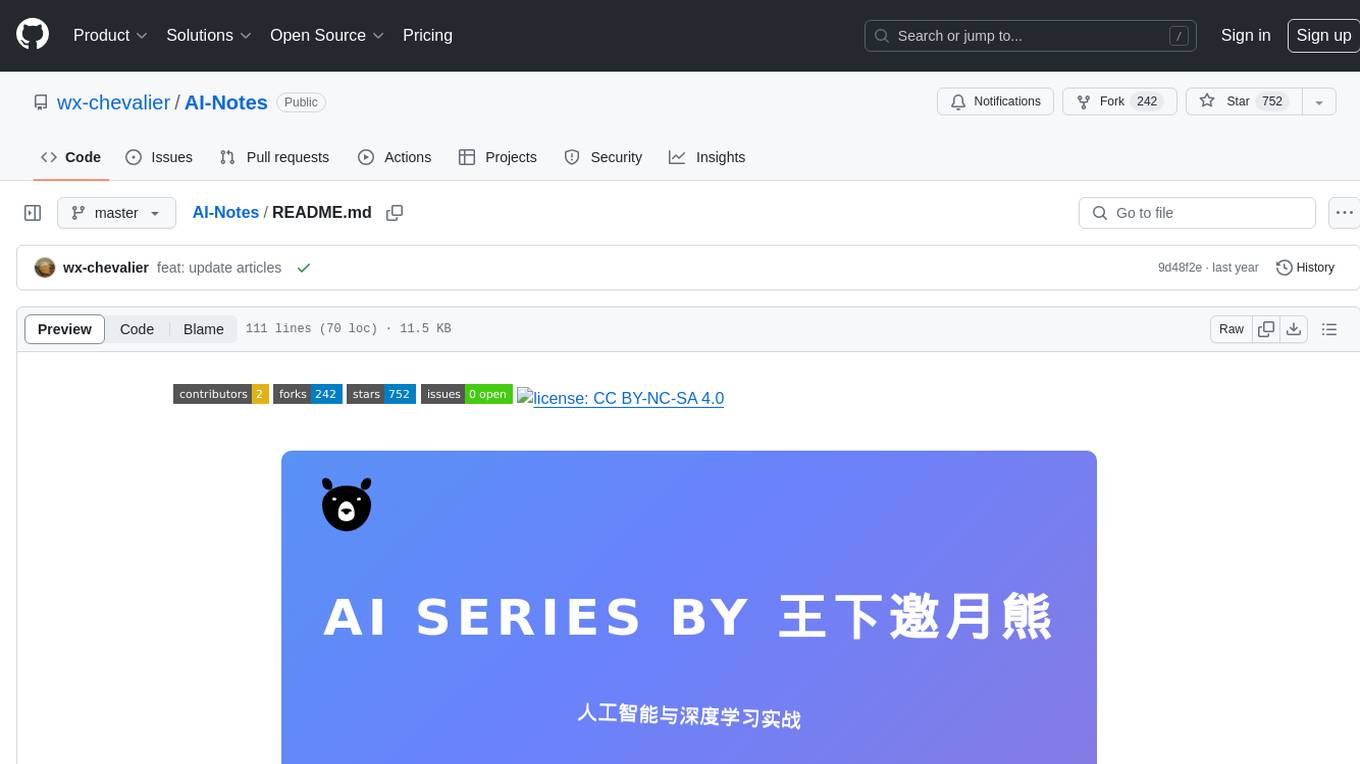
AI-Notes
AI-Notes is a repository dedicated to practical applications of artificial intelligence and deep learning. It covers concepts such as data mining, machine learning, natural language processing, and AI. The repository contains Jupyter Notebook examples for hands-on learning and experimentation. It explores the development stages of AI, from narrow artificial intelligence to general artificial intelligence and superintelligence. The content delves into machine learning algorithms, deep learning techniques, and the impact of AI on various industries like autonomous driving and healthcare. The repository aims to provide a comprehensive understanding of AI technologies and their real-world applications.
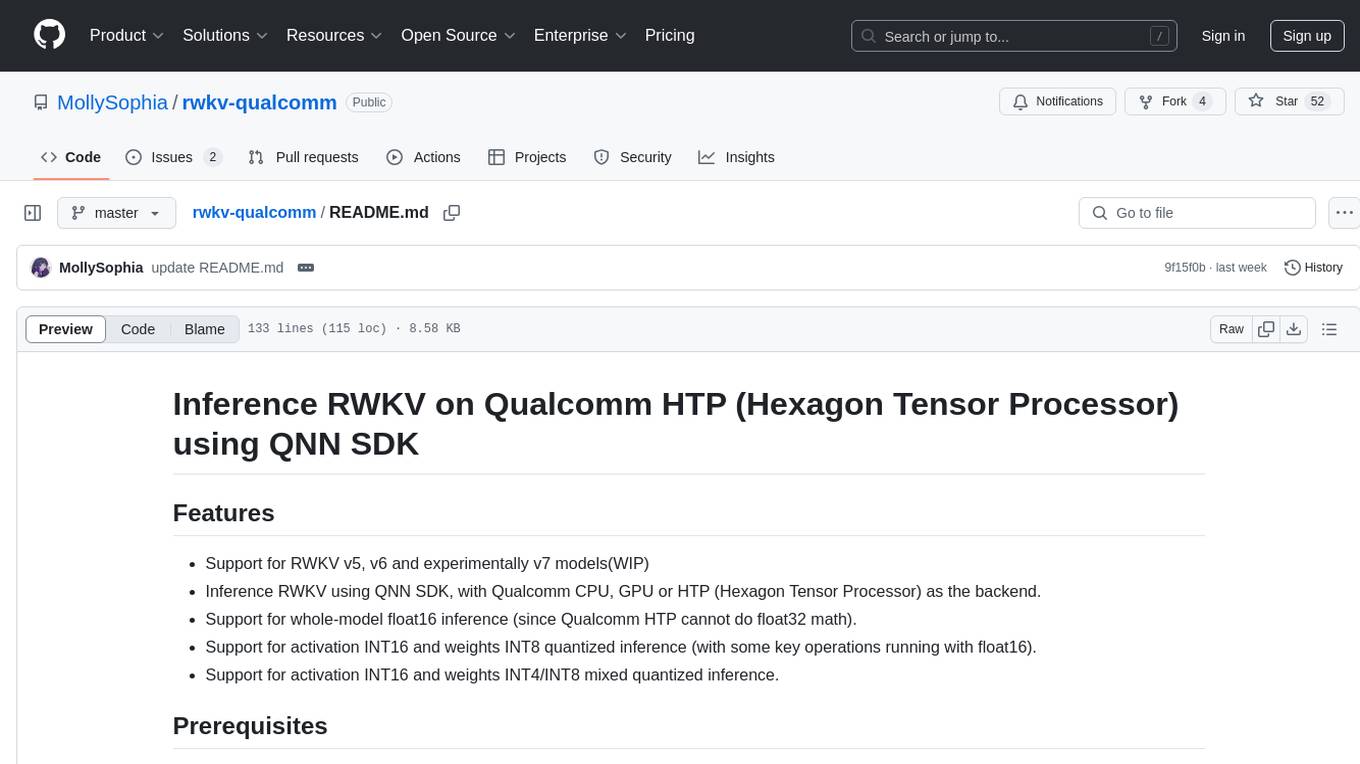
rwkv-qualcomm
This repository provides support for inference RWKV models on Qualcomm HTP (Hexagon Tensor Processor) using QNN SDK. It supports RWKV v5, v6, and experimentally v7 models, inference using Qualcomm CPU, GPU, or HTP as the backend, whole-model float16 inference, activation INT16 and weights INT8 quantized inference, and activation INT16 and weights INT4/INT8 mixed quantized inference. Users can convert model weights to QNN model library files, generate HTP context cache, and run inference on Qualcomm Snapdragon SM8650 with HTP v75. The project requires QNN SDK, AIMET toolkit, and specific hardware for verification.
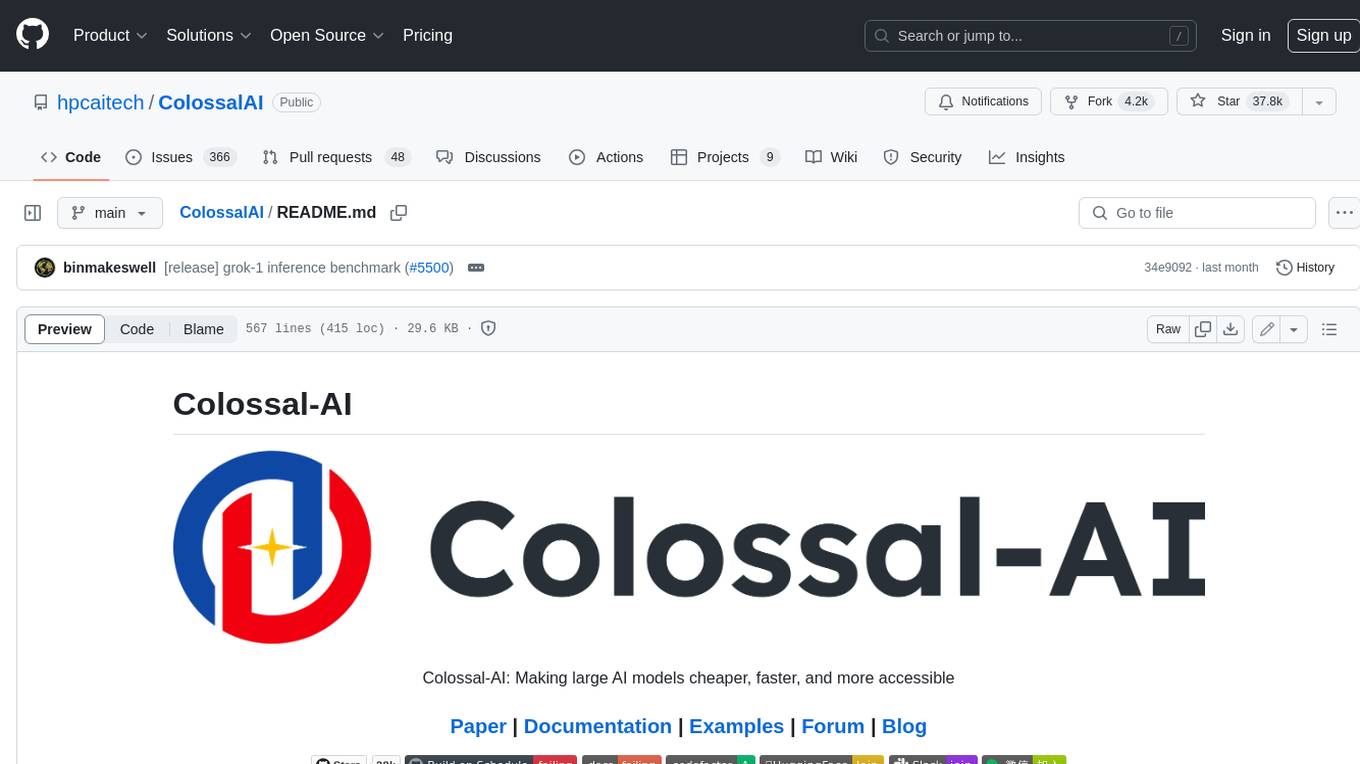
ColossalAI
Colossal-AI is a deep learning system for large-scale parallel training. It provides a unified interface to scale sequential code of model training to distributed environments. Colossal-AI supports parallel training methods such as data, pipeline, tensor, and sequence parallelism and is integrated with heterogeneous training and zero redundancy optimizer.
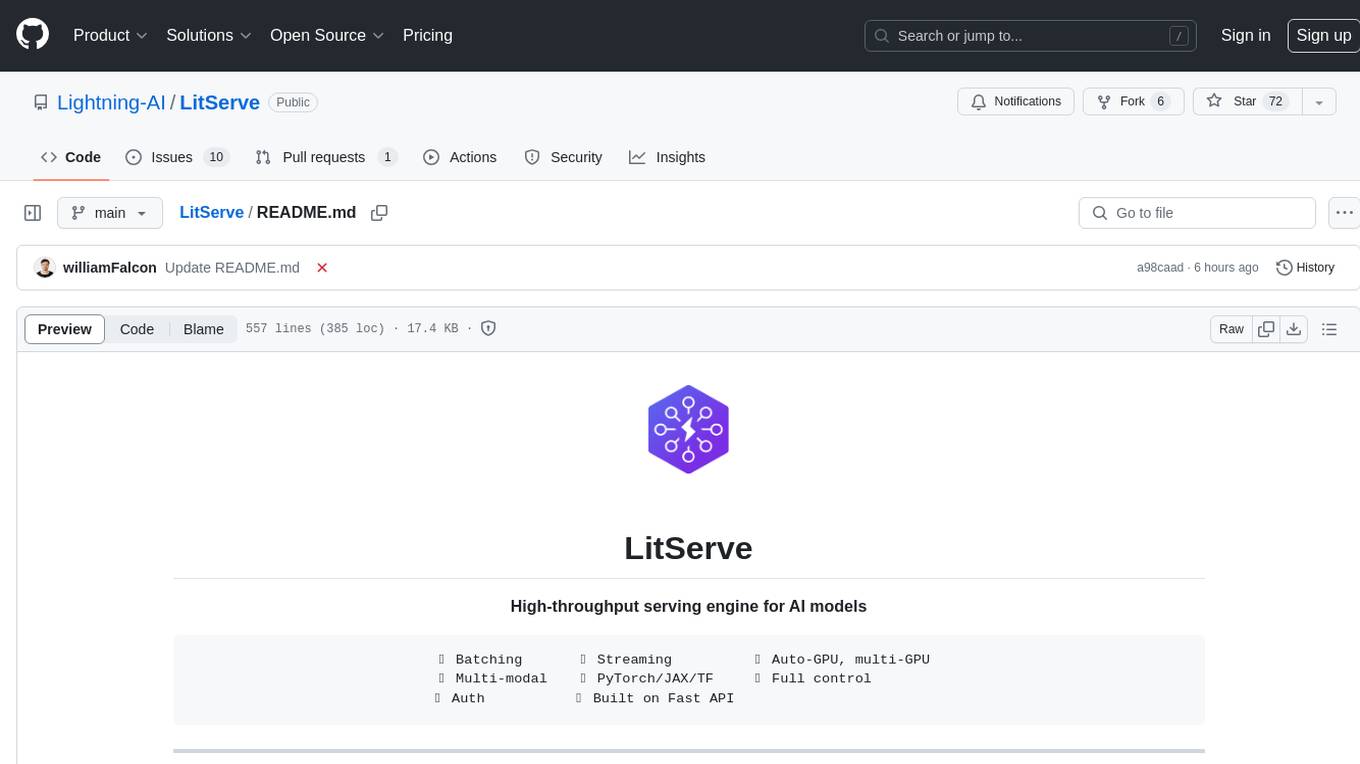
LitServe
LitServe is a high-throughput serving engine designed for deploying AI models at scale. It generates an API endpoint for models, handles batching, streaming, and autoscaling across CPU/GPUs. LitServe is built for enterprise scale with a focus on minimal, hackable code-base without bloat. It supports various model types like LLMs, vision, time-series, and works with frameworks like PyTorch, JAX, Tensorflow, and more. The tool allows users to focus on model performance rather than serving boilerplate, providing full control and flexibility.
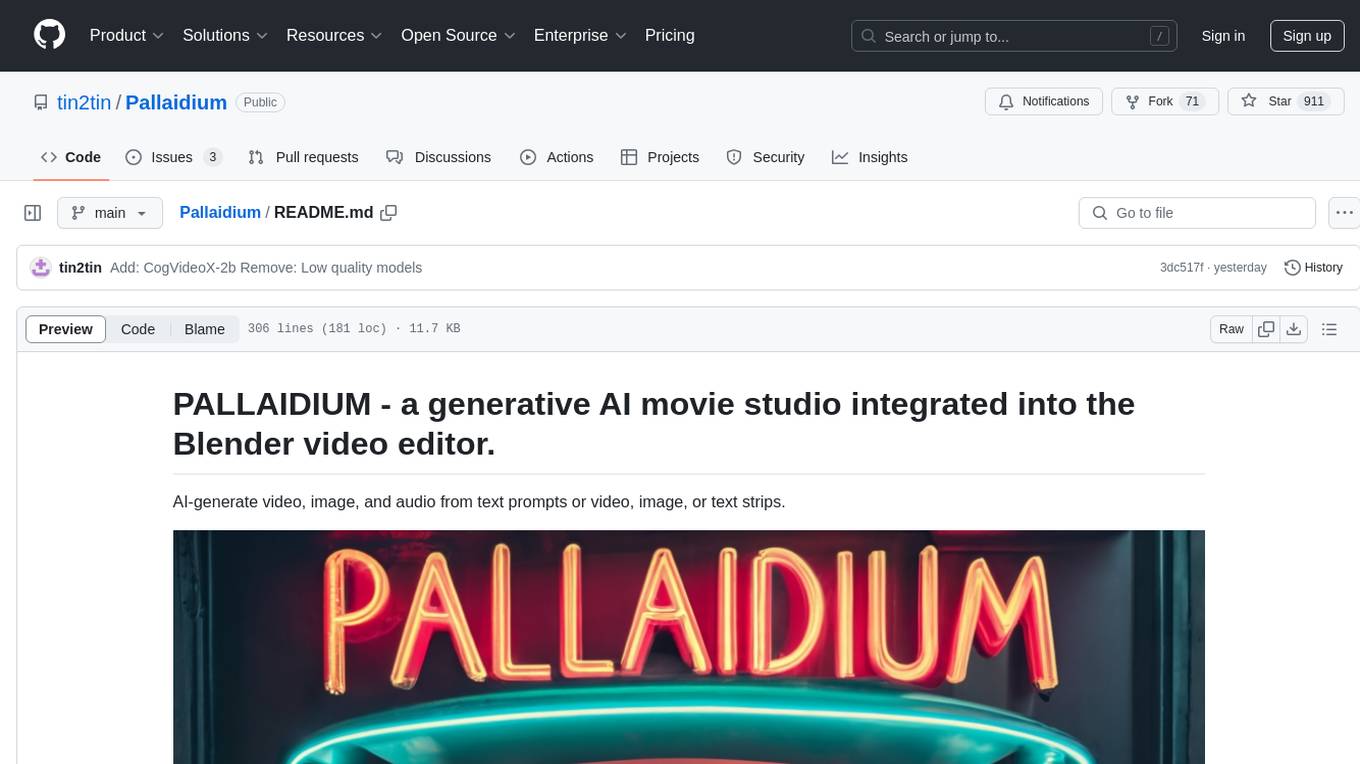
Pallaidium
Pallaidium is a generative AI movie studio integrated into the Blender video editor. It allows users to AI-generate video, image, and audio from text prompts or existing media files. The tool provides various features such as text to video, text to audio, text to speech, text to image, image to image, image to video, video to video, image to text, and more. It requires a Windows system with a CUDA-supported Nvidia card and at least 6 GB VRAM. Pallaidium offers batch processing capabilities, text to audio conversion using Bark, and various performance optimization tips. Users can install the tool by downloading the add-on and following the installation instructions provided. The tool comes with a set of restrictions on usage, prohibiting the generation of harmful, pornographic, violent, or false content.
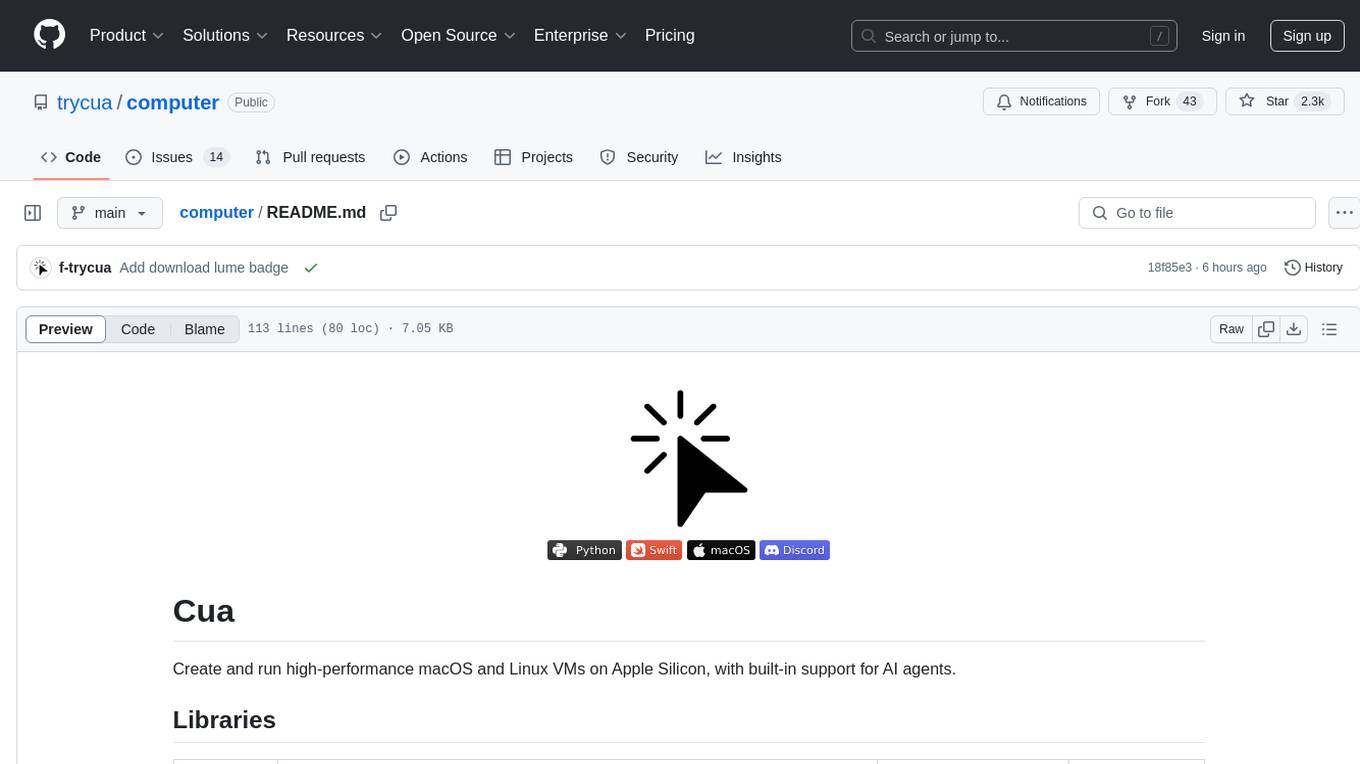
computer
Cua is a tool for creating and running high-performance macOS and Linux VMs on Apple Silicon, with built-in support for AI agents. It provides libraries like Lume for running VMs with near-native performance, Computer for interacting with sandboxes, and Agent for running agentic workflows. Users can refer to the documentation for onboarding and explore demos showcasing the tool's capabilities. Additionally, accessory libraries like Core, PyLume, Computer Server, and SOM offer additional functionality. Contributions to Cua are welcome, and the tool is open-sourced under the MIT License.
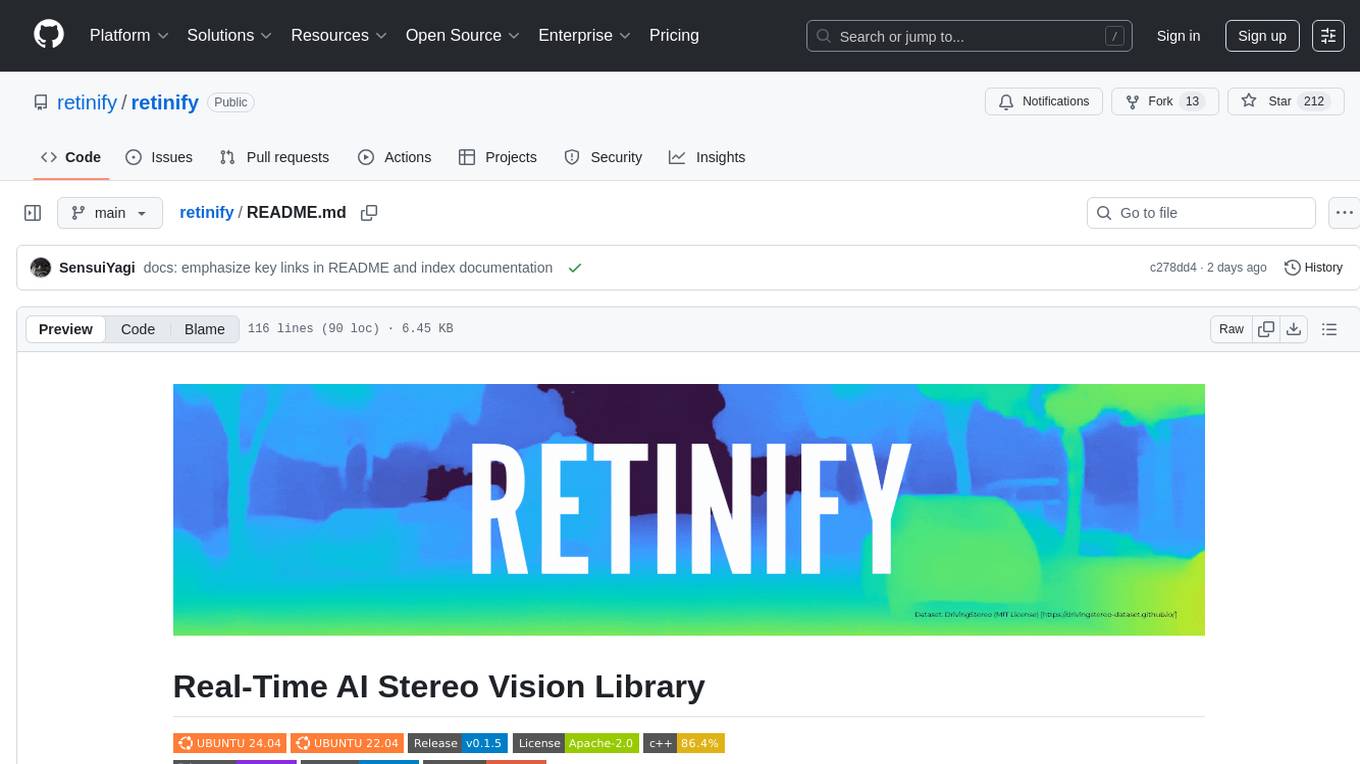
retinify
Retinify is an advanced AI-powered stereo vision library designed for robotics, enabling real-time, high-precision 3D perception by leveraging GPU and NPU acceleration. It is open source under Apache-2.0 license, offers high precision 3D mapping and object recognition, runs computations on GPU for fast performance, accepts stereo images from any rectified camera setup, is cost-efficient using minimal hardware, and has minimal dependencies on CUDA Toolkit, cuDNN, and TensorRT. The tool provides a pipeline for stereo matching and supports various image data types independently of OpenCV.

TTS-WebUI
TTS WebUI is a comprehensive tool for text-to-speech synthesis, audio/music generation, and audio conversion. It offers a user-friendly interface for various AI projects related to voice and audio processing. The tool provides a range of models and extensions for different tasks, along with integrations like Silly Tavern and OpenWebUI. With support for Docker setup and compatibility with Linux and Windows, TTS WebUI aims to facilitate creative and responsible use of AI technologies in a user-friendly manner.
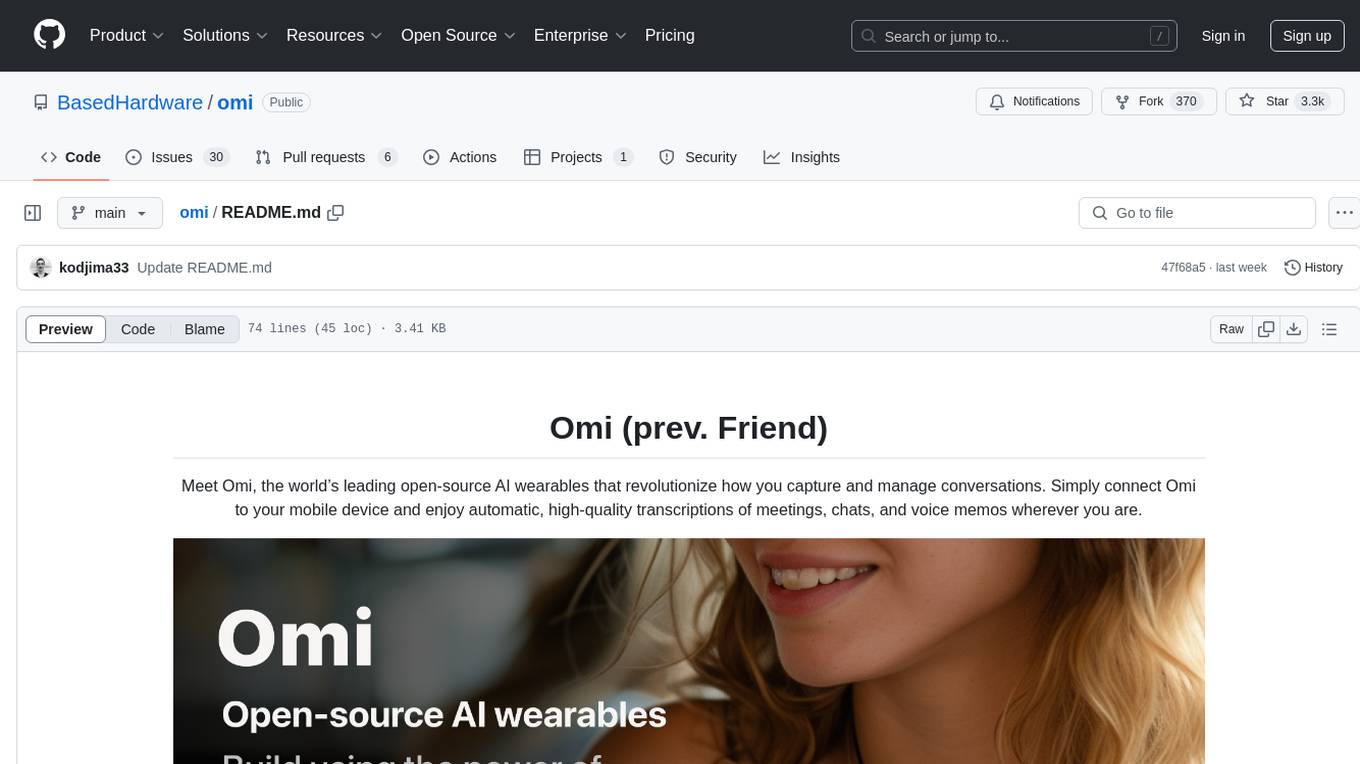
omi
Omi is an open-source AI wearable that provides automatic, high-quality transcriptions of meetings, chats, and voice memos. It revolutionizes how conversations are captured and managed by connecting to mobile devices. The tool offers features for seamless documentation and integration with third-party services.
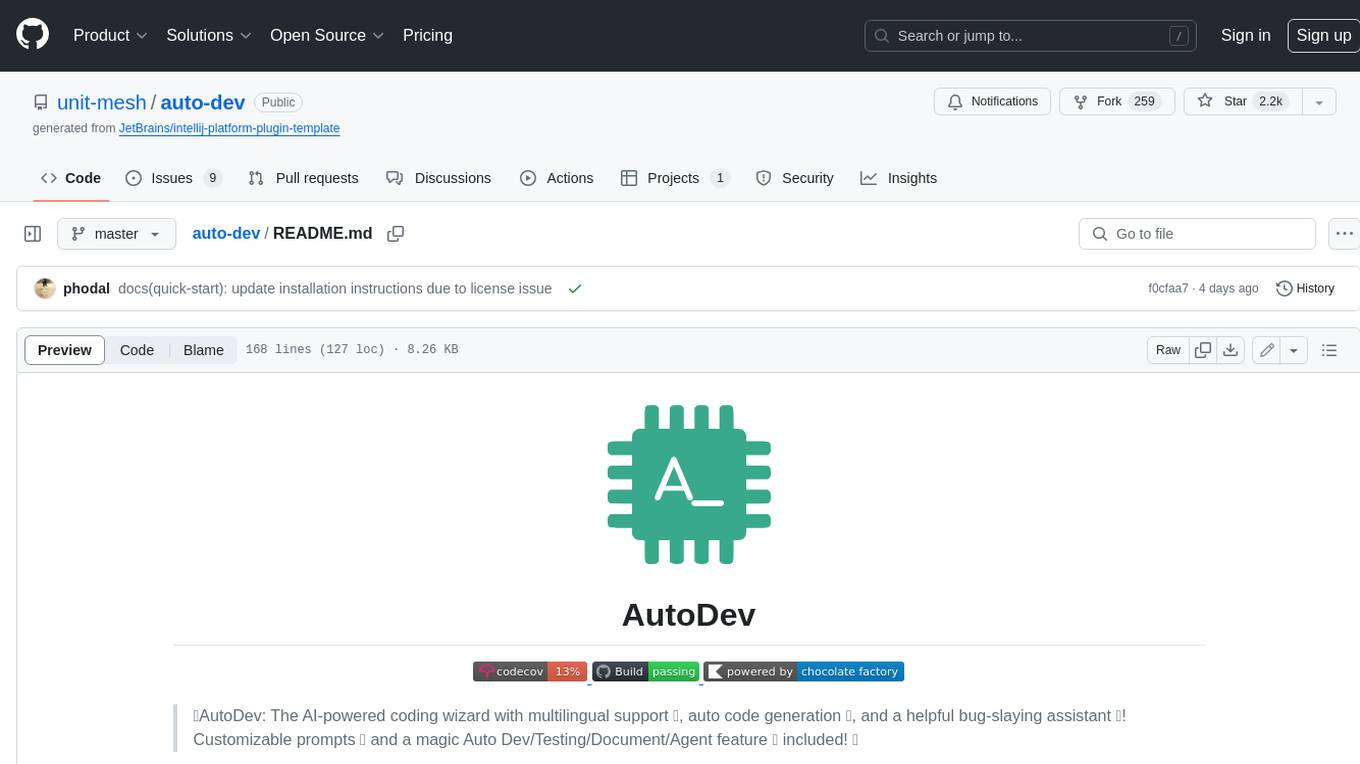
auto-dev
AutoDev is an AI-powered coding wizard that supports multiple languages, including Java, Kotlin, JavaScript/TypeScript, Rust, Python, Golang, C/C++/OC, and more. It offers a range of features, including auto development mode, copilot mode, chat with AI, customization options, SDLC support, custom AI agent integration, and language features such as language support, extensions, and a DevIns language for AI agent development. AutoDev is designed to assist developers with tasks such as auto code generation, bug detection, code explanation, exception tracing, commit message generation, code review content generation, smart refactoring, Dockerfile generation, CI/CD config file generation, and custom shell/command generation. It also provides a built-in LLM fine-tune model and supports UnitEval for LLM result evaluation and UnitGen for code-LLM fine-tune data generation.
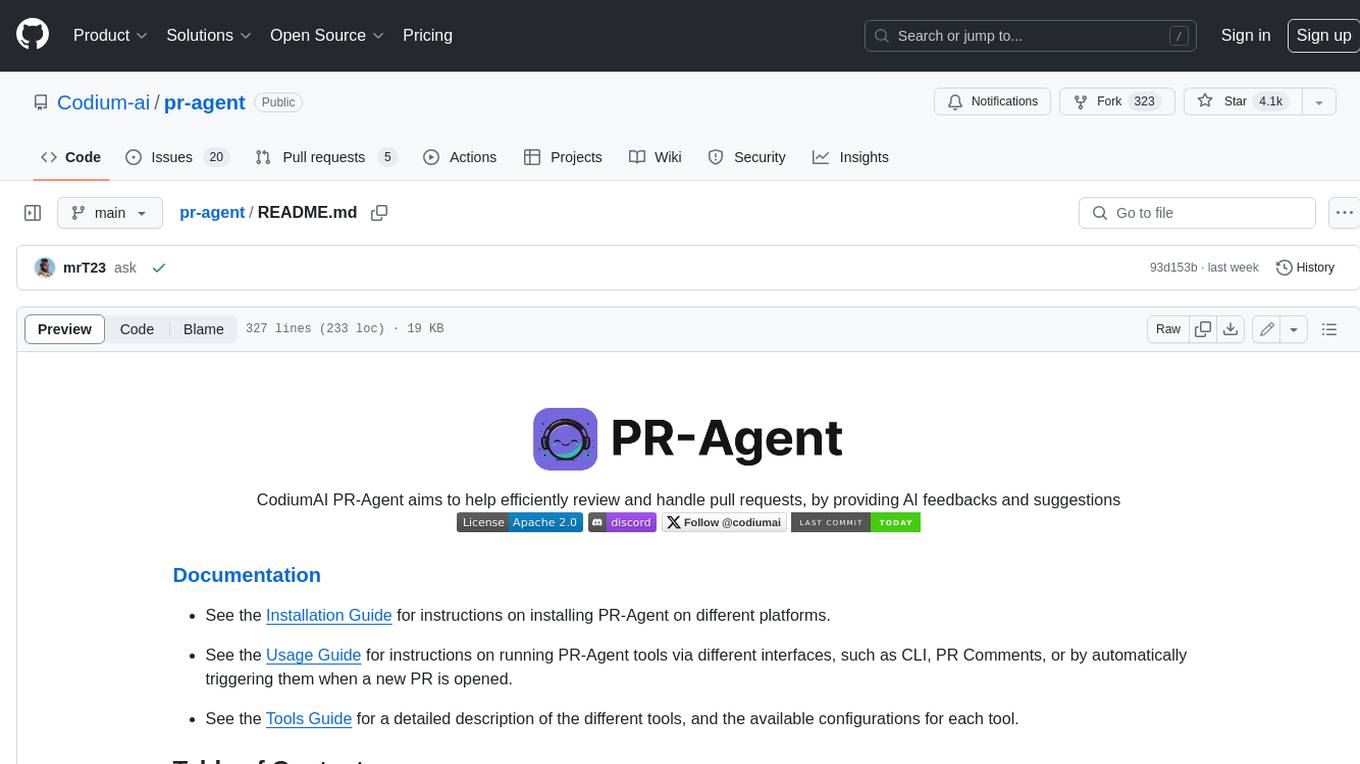
pr-agent
PR-Agent is a tool that helps to efficiently review and handle pull requests by providing AI feedbacks and suggestions. It supports various commands such as generating PR descriptions, providing code suggestions, answering questions about the PR, and updating the CHANGELOG.md file. PR-Agent can be used via CLI, GitHub Action, GitHub App, Docker, and supports multiple git providers and models. It emphasizes real-life practical usage, with each tool having a single GPT-4 call for quick and affordable responses. The PR Compression strategy enables effective handling of both short and long PRs, while the JSON prompting strategy allows for modular and customizable tools. PR-Agent Pro, the hosted version by CodiumAI, provides additional benefits such as full management, improved privacy, priority support, and extra features.
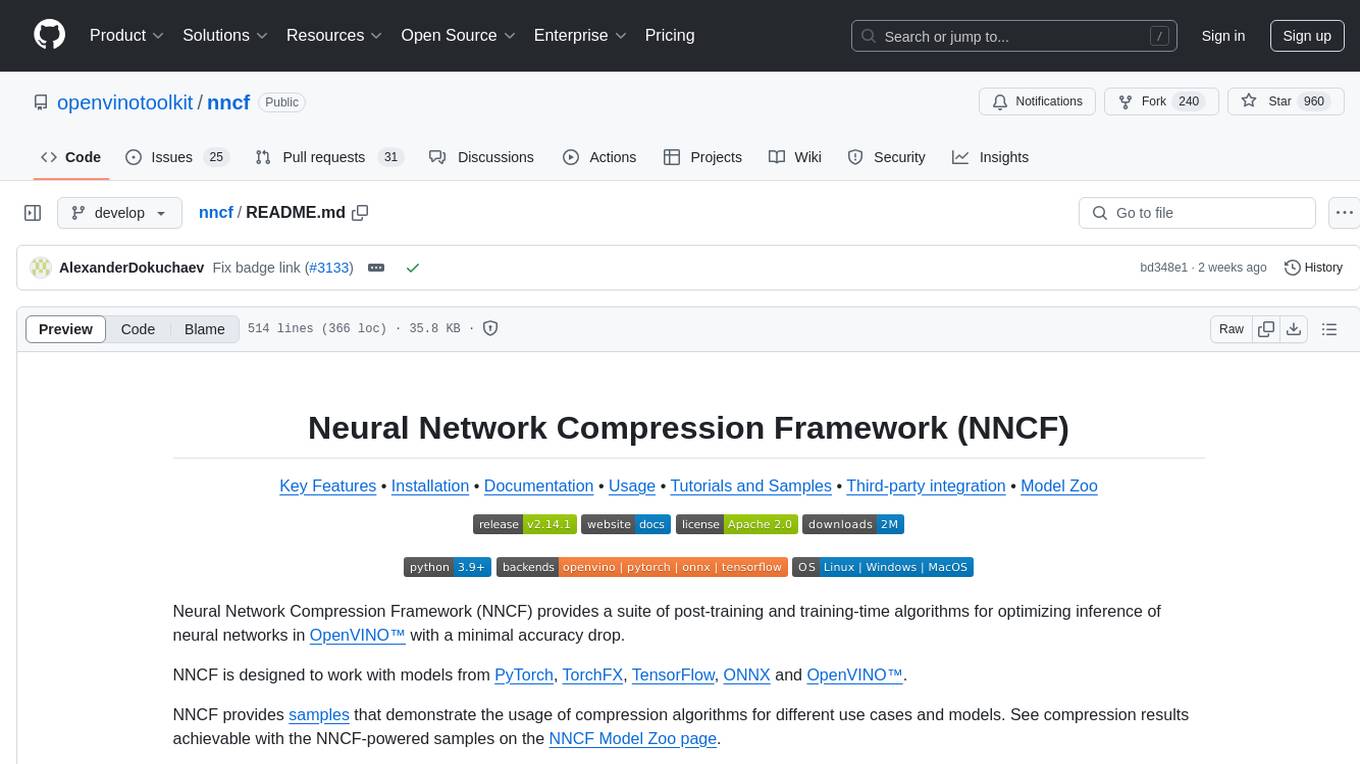
nncf
Neural Network Compression Framework (NNCF) provides a suite of post-training and training-time algorithms for optimizing inference of neural networks in OpenVINO™ with a minimal accuracy drop. It is designed to work with models from PyTorch, TorchFX, TensorFlow, ONNX, and OpenVINO™. NNCF offers samples demonstrating compression algorithms for various use cases and models, with the ability to add different compression algorithms easily. It supports GPU-accelerated layers, distributed training, and seamless combination of pruning, sparsity, and quantization algorithms. NNCF allows exporting compressed models to ONNX or TensorFlow formats for use with OpenVINO™ toolkit, and supports Accuracy-Aware model training pipelines via Adaptive Compression Level Training and Early Exit Training.
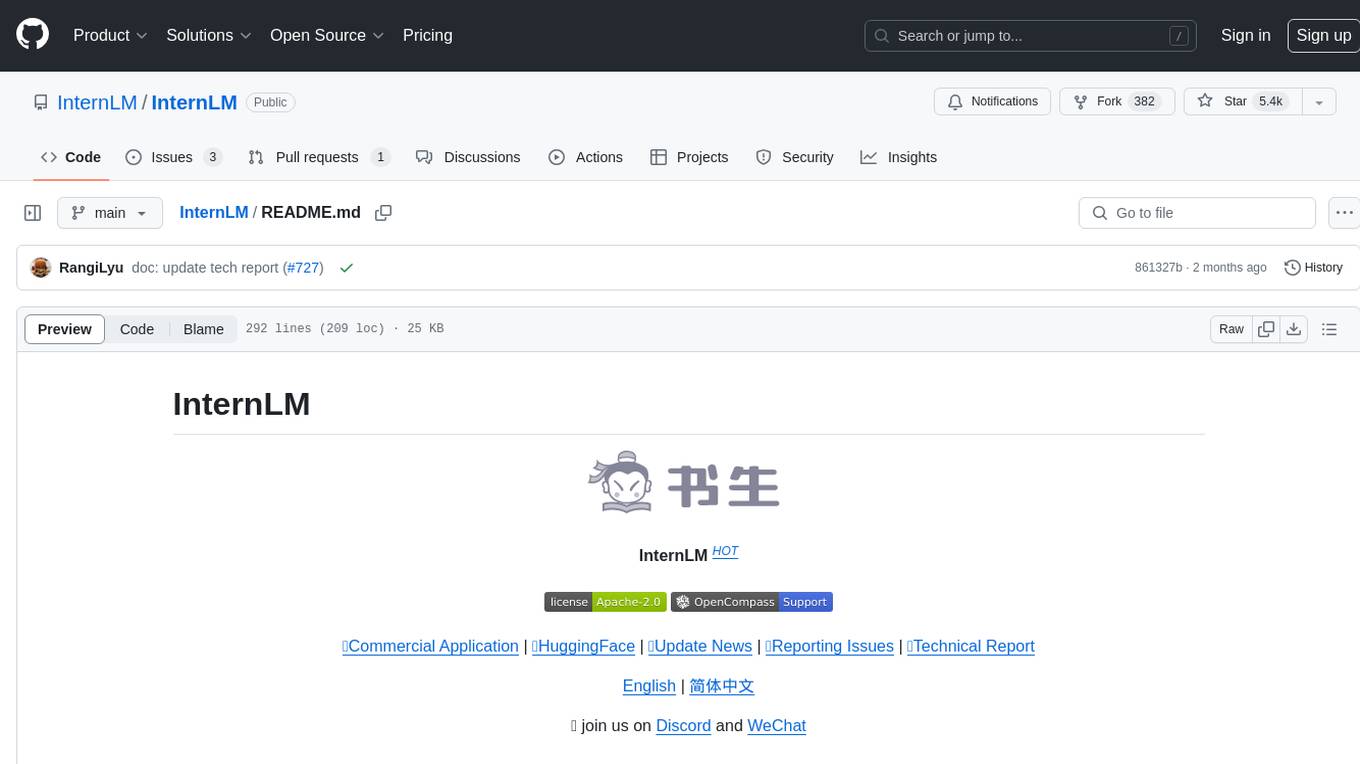
InternLM
InternLM is a powerful language model series with features such as 200K context window for long-context tasks, outstanding comprehensive performance in reasoning, math, code, chat experience, instruction following, and creative writing, code interpreter & data analysis capabilities, and stronger tool utilization capabilities. It offers models in sizes of 7B and 20B, suitable for research and complex scenarios. The models are recommended for various applications and exhibit better performance than previous generations. InternLM models may match or surpass other open-source models like ChatGPT. The tool has been evaluated on various datasets and has shown superior performance in multiple tasks. It requires Python >= 3.8, PyTorch >= 1.12.0, and Transformers >= 4.34 for usage. InternLM can be used for tasks like chat, agent applications, fine-tuning, deployment, and long-context inference.
For similar tasks
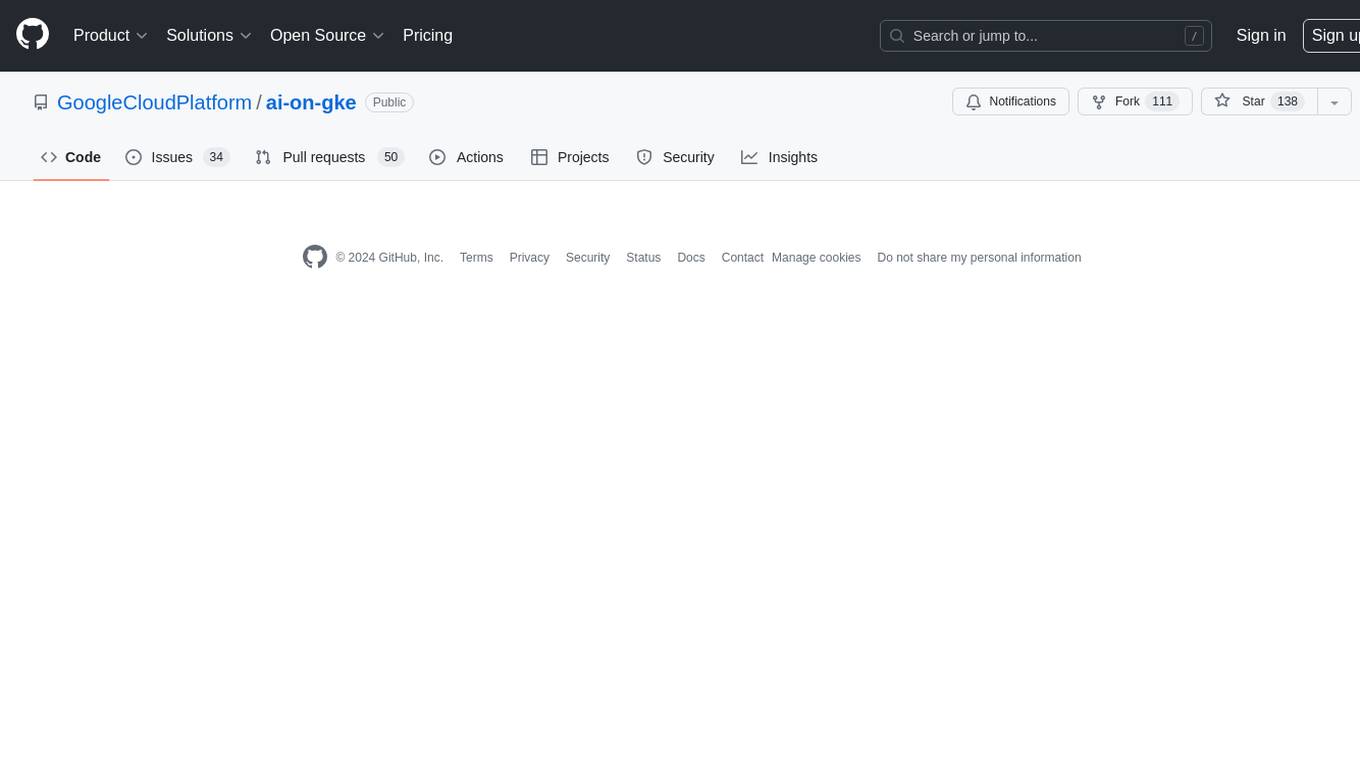
ai-on-gke
This repository contains assets related to AI/ML workloads on Google Kubernetes Engine (GKE). Run optimized AI/ML workloads with Google Kubernetes Engine (GKE) platform orchestration capabilities. A robust AI/ML platform considers the following layers: Infrastructure orchestration that support GPUs and TPUs for training and serving workloads at scale Flexible integration with distributed computing and data processing frameworks Support for multiple teams on the same infrastructure to maximize utilization of resources
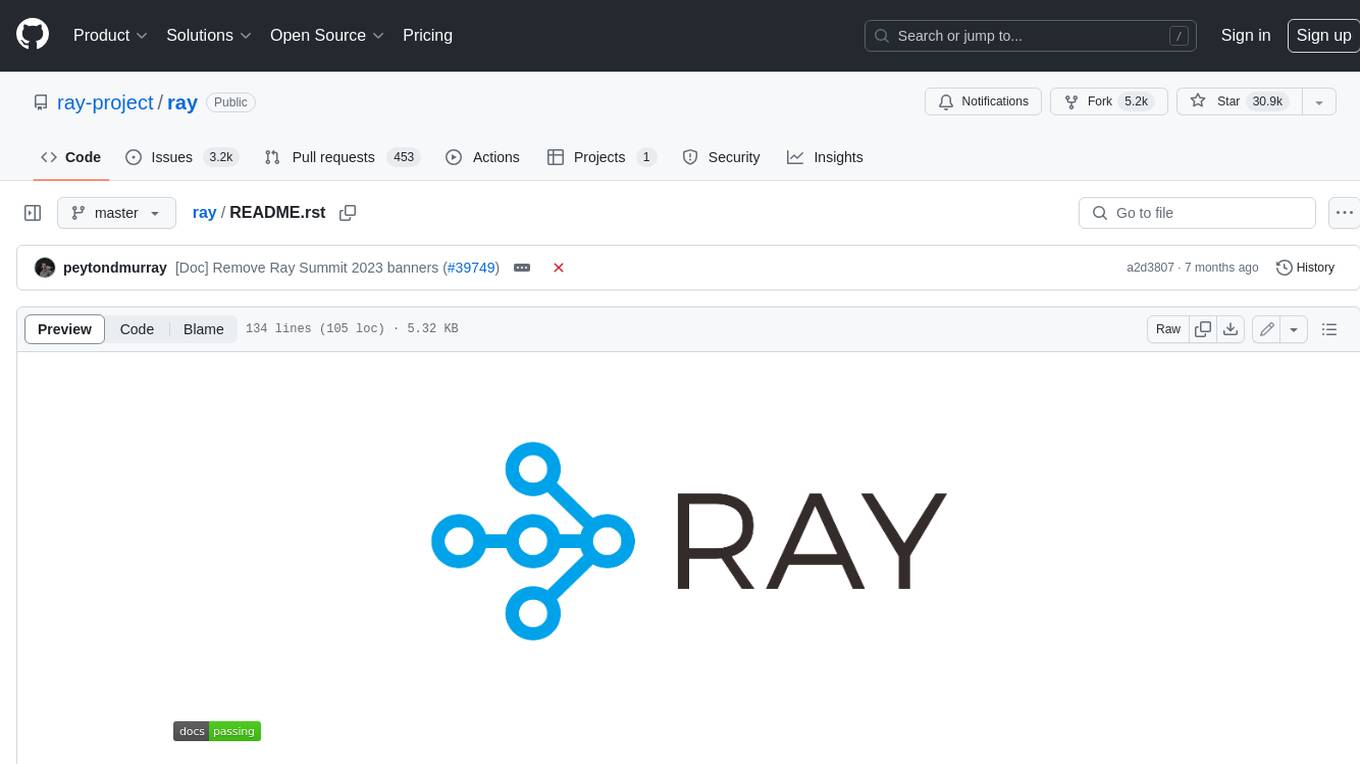
ray
Ray is a unified framework for scaling AI and Python applications. It consists of a core distributed runtime and a set of AI libraries for simplifying ML compute, including Data, Train, Tune, RLlib, and Serve. Ray runs on any machine, cluster, cloud provider, and Kubernetes, and features a growing ecosystem of community integrations. With Ray, you can seamlessly scale the same code from a laptop to a cluster, making it easy to meet the compute-intensive demands of modern ML workloads.
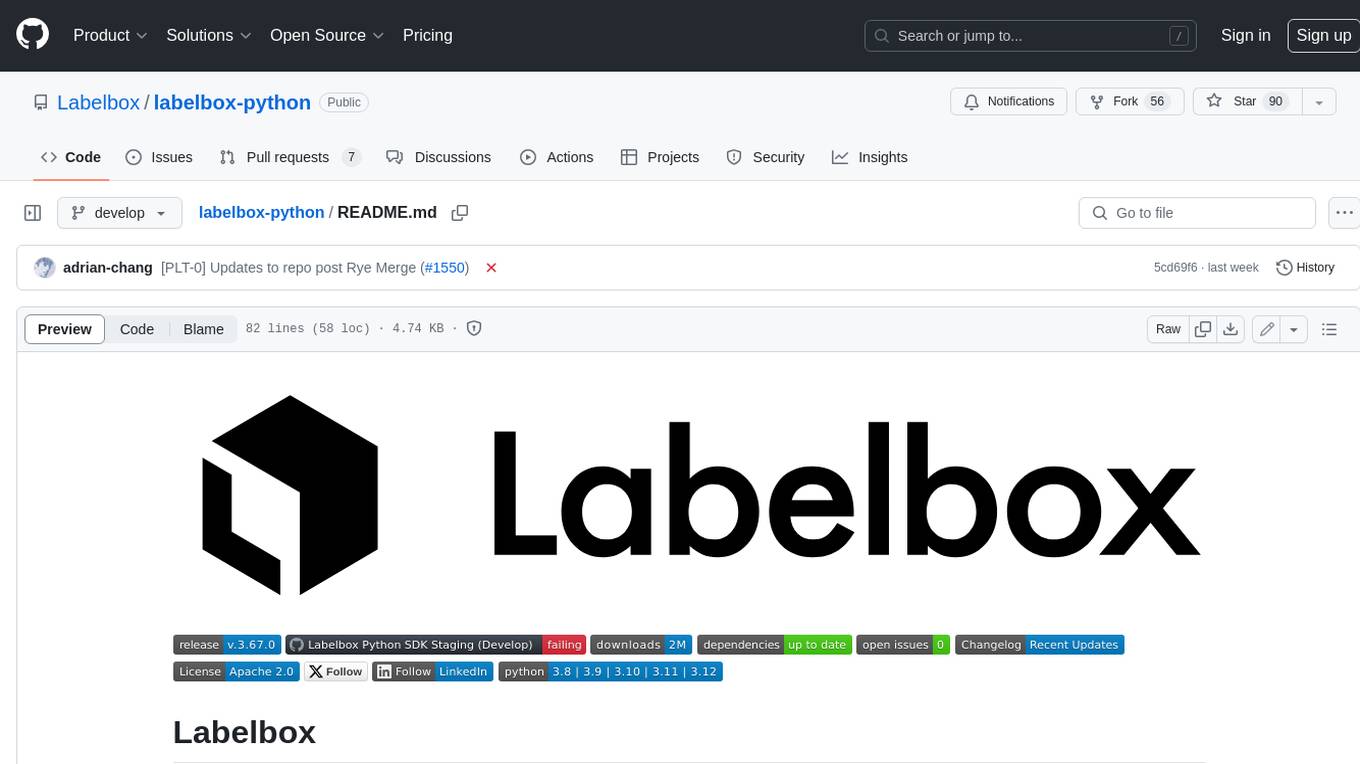
labelbox-python
Labelbox is a data-centric AI platform for enterprises to develop, optimize, and use AI to solve problems and power new products and services. Enterprises use Labelbox to curate data, generate high-quality human feedback data for computer vision and LLMs, evaluate model performance, and automate tasks by combining AI and human-centric workflows. The academic & research community uses Labelbox for cutting-edge AI research.
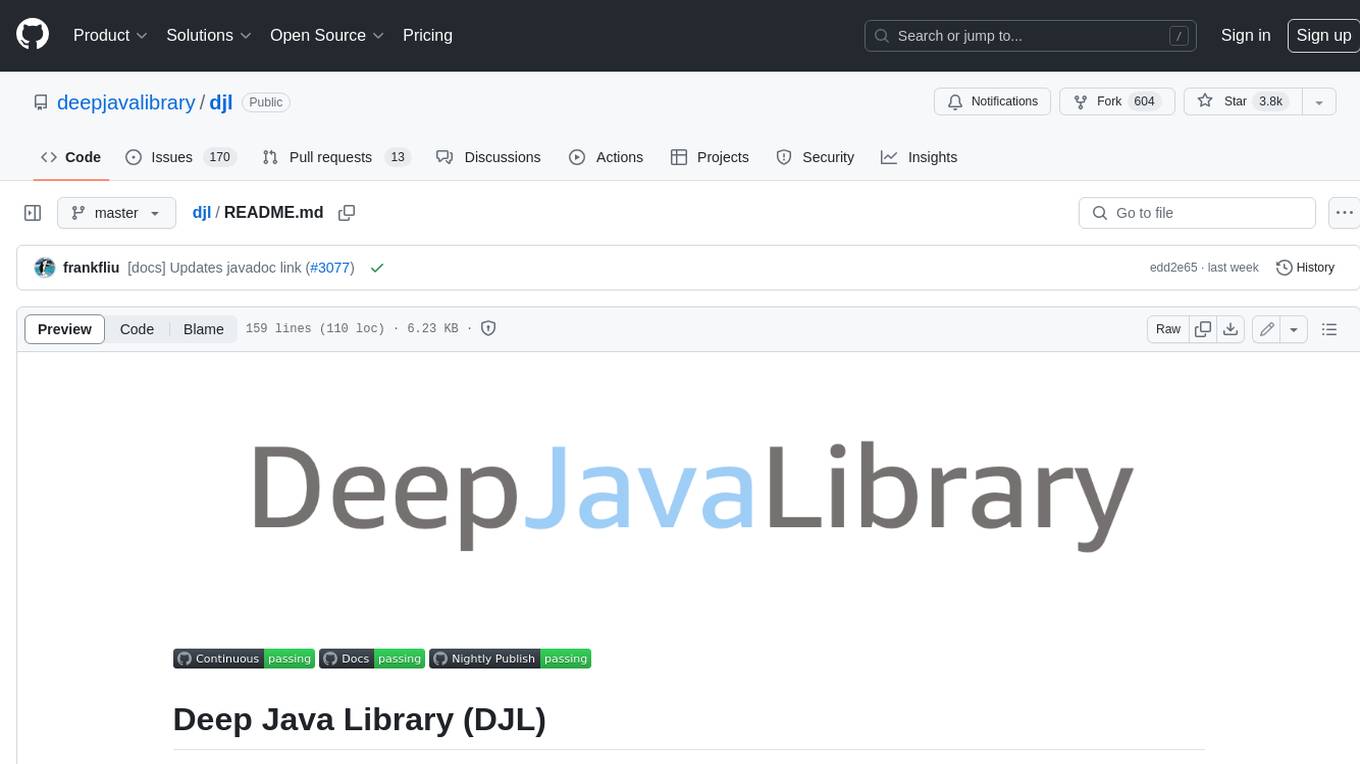
djl
Deep Java Library (DJL) is an open-source, high-level, engine-agnostic Java framework for deep learning. It is designed to be easy to get started with and simple to use for Java developers. DJL provides a native Java development experience and allows users to integrate machine learning and deep learning models with their Java applications. The framework is deep learning engine agnostic, enabling users to switch engines at any point for optimal performance. DJL's ergonomic API interface guides users with best practices to accomplish deep learning tasks, such as running inference and training neural networks.
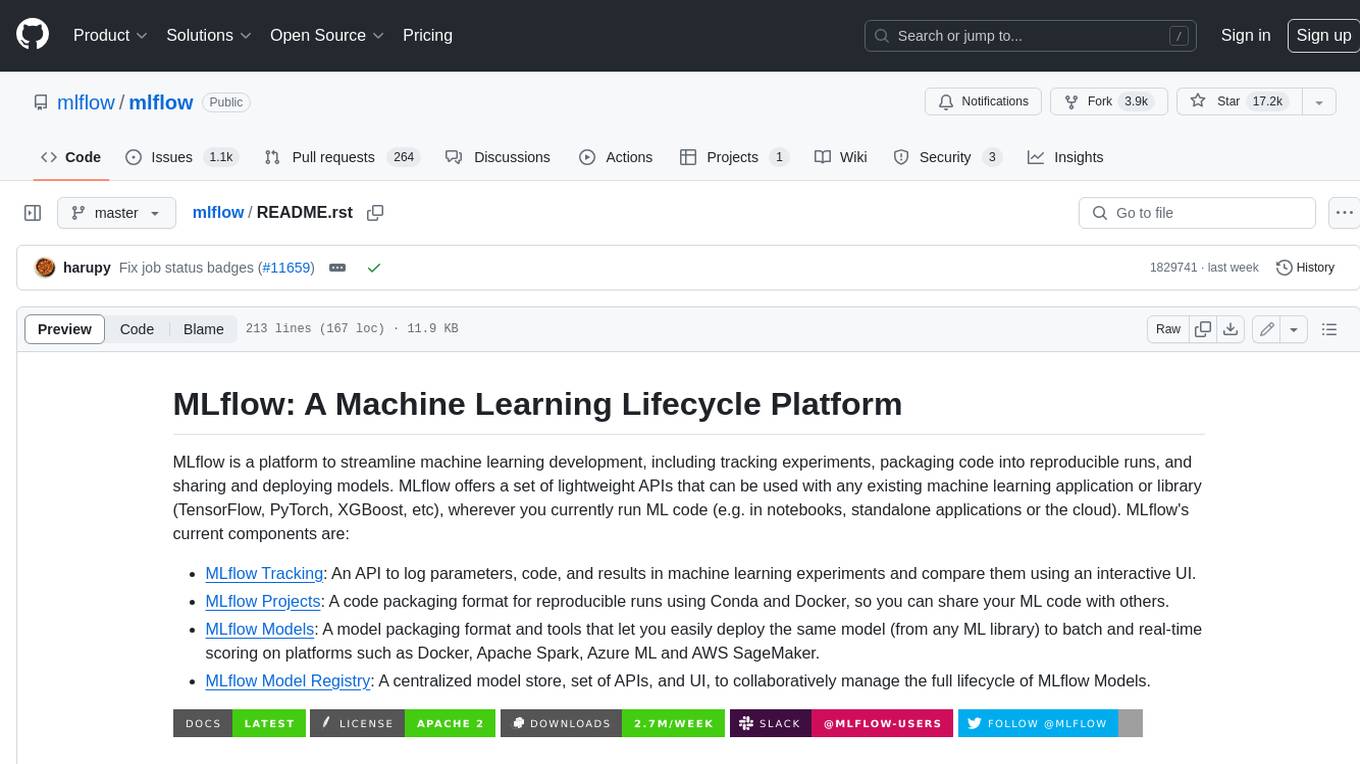
mlflow
MLflow is a platform to streamline machine learning development, including tracking experiments, packaging code into reproducible runs, and sharing and deploying models. MLflow offers a set of lightweight APIs that can be used with any existing machine learning application or library (TensorFlow, PyTorch, XGBoost, etc), wherever you currently run ML code (e.g. in notebooks, standalone applications or the cloud). MLflow's current components are:
* `MLflow Tracking

tt-metal
TT-NN is a python & C++ Neural Network OP library. It provides a low-level programming model, TT-Metalium, enabling kernel development for Tenstorrent hardware.
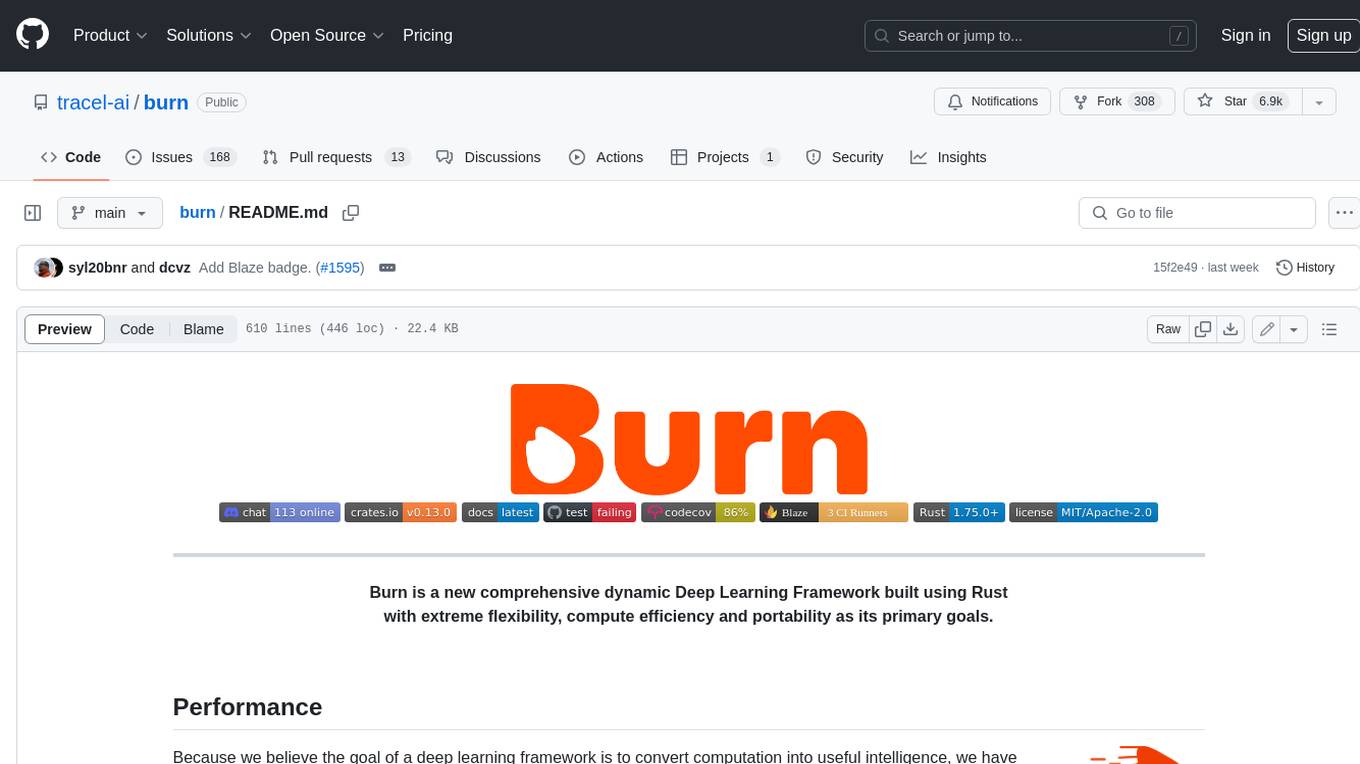
burn
Burn is a new comprehensive dynamic Deep Learning Framework built using Rust with extreme flexibility, compute efficiency and portability as its primary goals.
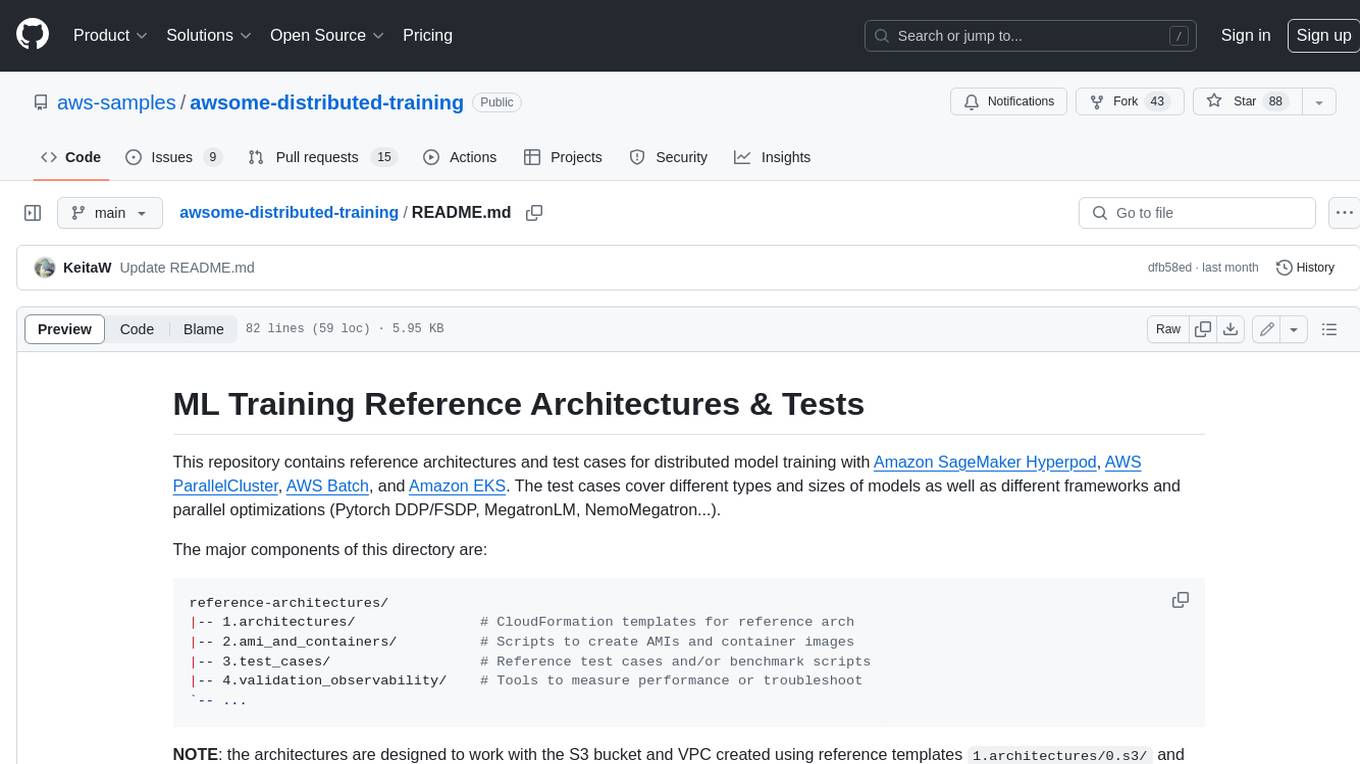
awsome-distributed-training
This repository contains reference architectures and test cases for distributed model training with Amazon SageMaker Hyperpod, AWS ParallelCluster, AWS Batch, and Amazon EKS. The test cases cover different types and sizes of models as well as different frameworks and parallel optimizations (Pytorch DDP/FSDP, MegatronLM, NemoMegatron...).
For similar jobs

weave
Weave is a toolkit for developing Generative AI applications, built by Weights & Biases. With Weave, you can log and debug language model inputs, outputs, and traces; build rigorous, apples-to-apples evaluations for language model use cases; and organize all the information generated across the LLM workflow, from experimentation to evaluations to production. Weave aims to bring rigor, best-practices, and composability to the inherently experimental process of developing Generative AI software, without introducing cognitive overhead.
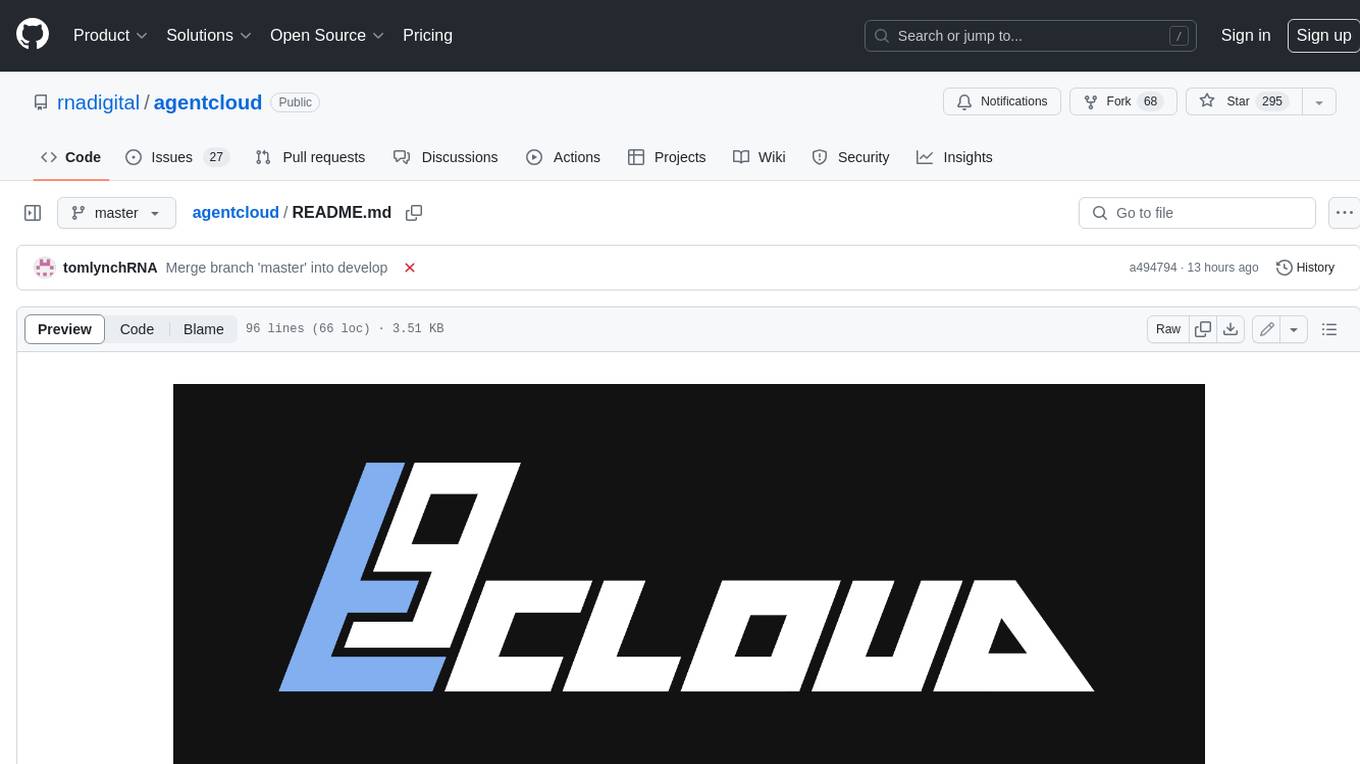
agentcloud
AgentCloud is an open-source platform that enables companies to build and deploy private LLM chat apps, empowering teams to securely interact with their data. It comprises three main components: Agent Backend, Webapp, and Vector Proxy. To run this project locally, clone the repository, install Docker, and start the services. The project is licensed under the GNU Affero General Public License, version 3 only. Contributions and feedback are welcome from the community.
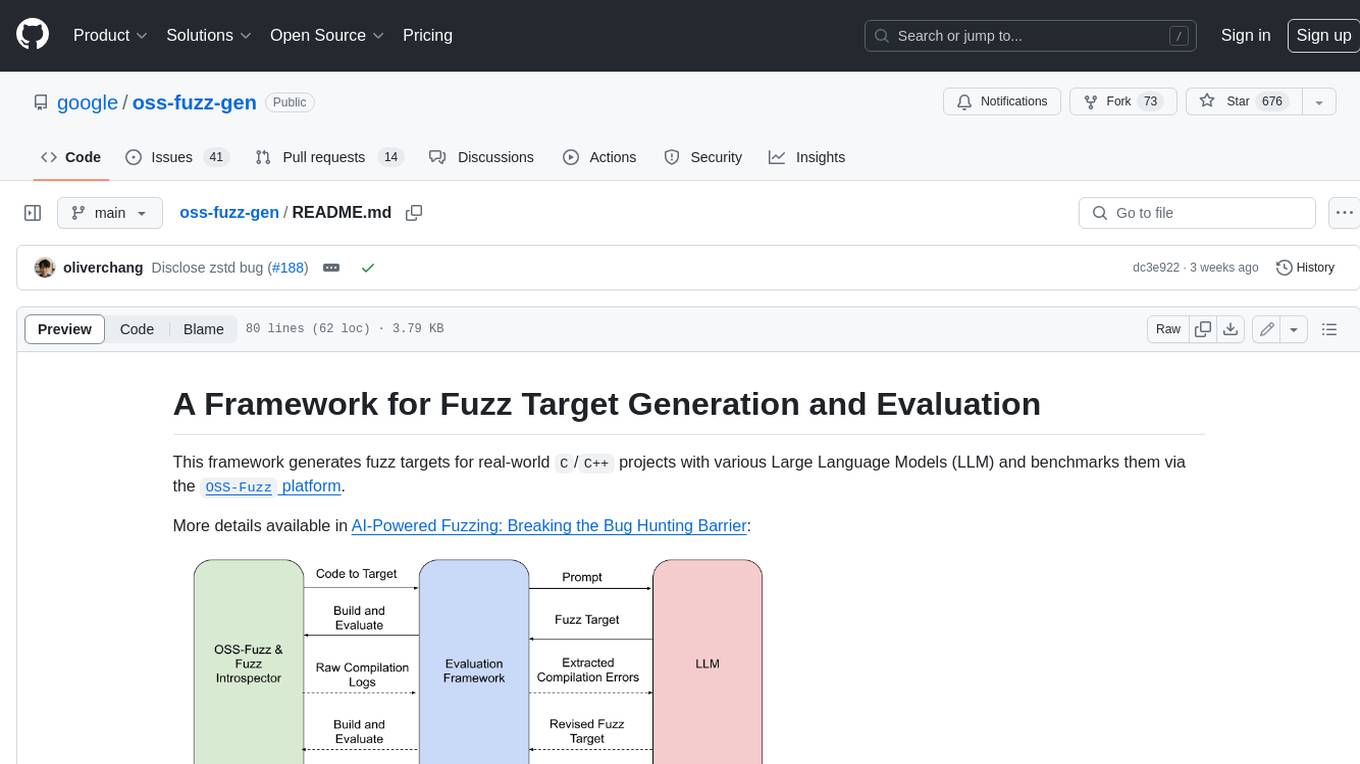
oss-fuzz-gen
This framework generates fuzz targets for real-world `C`/`C++` projects with various Large Language Models (LLM) and benchmarks them via the `OSS-Fuzz` platform. It manages to successfully leverage LLMs to generate valid fuzz targets (which generate non-zero coverage increase) for 160 C/C++ projects. The maximum line coverage increase is 29% from the existing human-written targets.

LLMStack
LLMStack is a no-code platform for building generative AI agents, workflows, and chatbots. It allows users to connect their own data, internal tools, and GPT-powered models without any coding experience. LLMStack can be deployed to the cloud or on-premise and can be accessed via HTTP API or triggered from Slack or Discord.

VisionCraft
The VisionCraft API is a free API for using over 100 different AI models. From images to sound.

kaito
Kaito is an operator that automates the AI/ML inference model deployment in a Kubernetes cluster. It manages large model files using container images, avoids tuning deployment parameters to fit GPU hardware by providing preset configurations, auto-provisions GPU nodes based on model requirements, and hosts large model images in the public Microsoft Container Registry (MCR) if the license allows. Using Kaito, the workflow of onboarding large AI inference models in Kubernetes is largely simplified.

PyRIT
PyRIT is an open access automation framework designed to empower security professionals and ML engineers to red team foundation models and their applications. It automates AI Red Teaming tasks to allow operators to focus on more complicated and time-consuming tasks and can also identify security harms such as misuse (e.g., malware generation, jailbreaking), and privacy harms (e.g., identity theft). The goal is to allow researchers to have a baseline of how well their model and entire inference pipeline is doing against different harm categories and to be able to compare that baseline to future iterations of their model. This allows them to have empirical data on how well their model is doing today, and detect any degradation of performance based on future improvements.
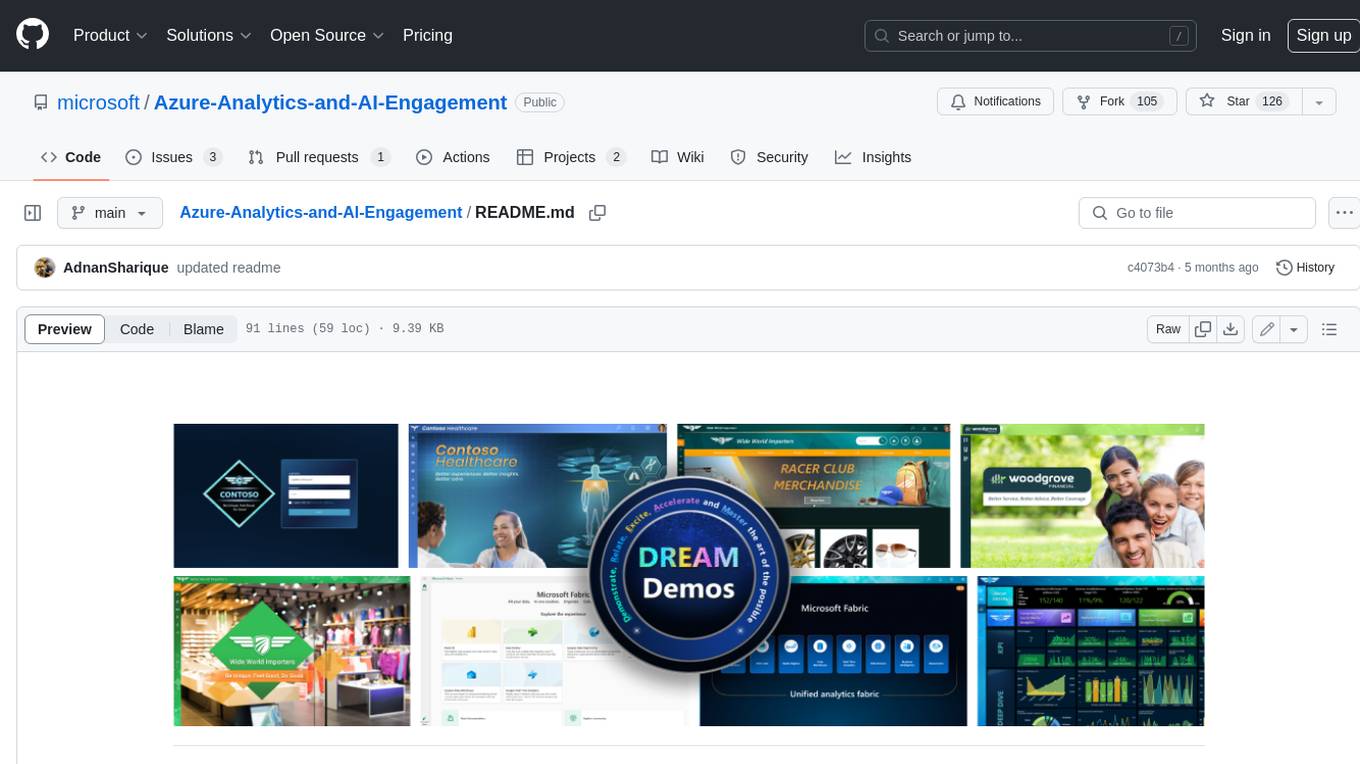
Azure-Analytics-and-AI-Engagement
The Azure-Analytics-and-AI-Engagement repository provides packaged Industry Scenario DREAM Demos with ARM templates (Containing a demo web application, Power BI reports, Synapse resources, AML Notebooks etc.) that can be deployed in a customer’s subscription using the CAPE tool within a matter of few hours. Partners can also deploy DREAM Demos in their own subscriptions using DPoC.
